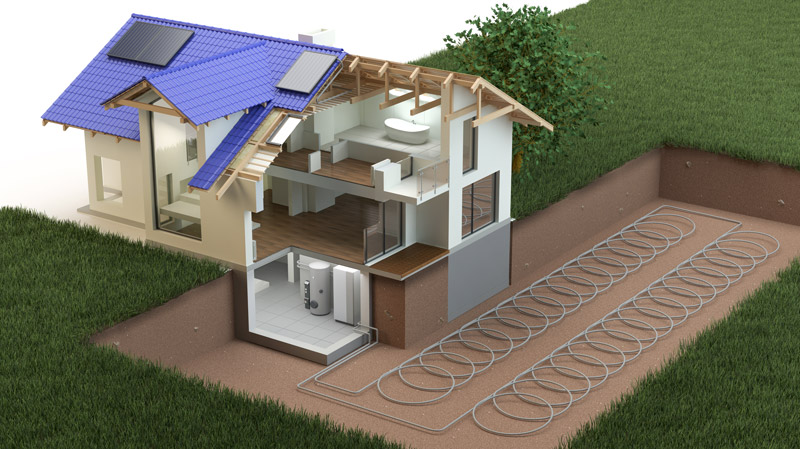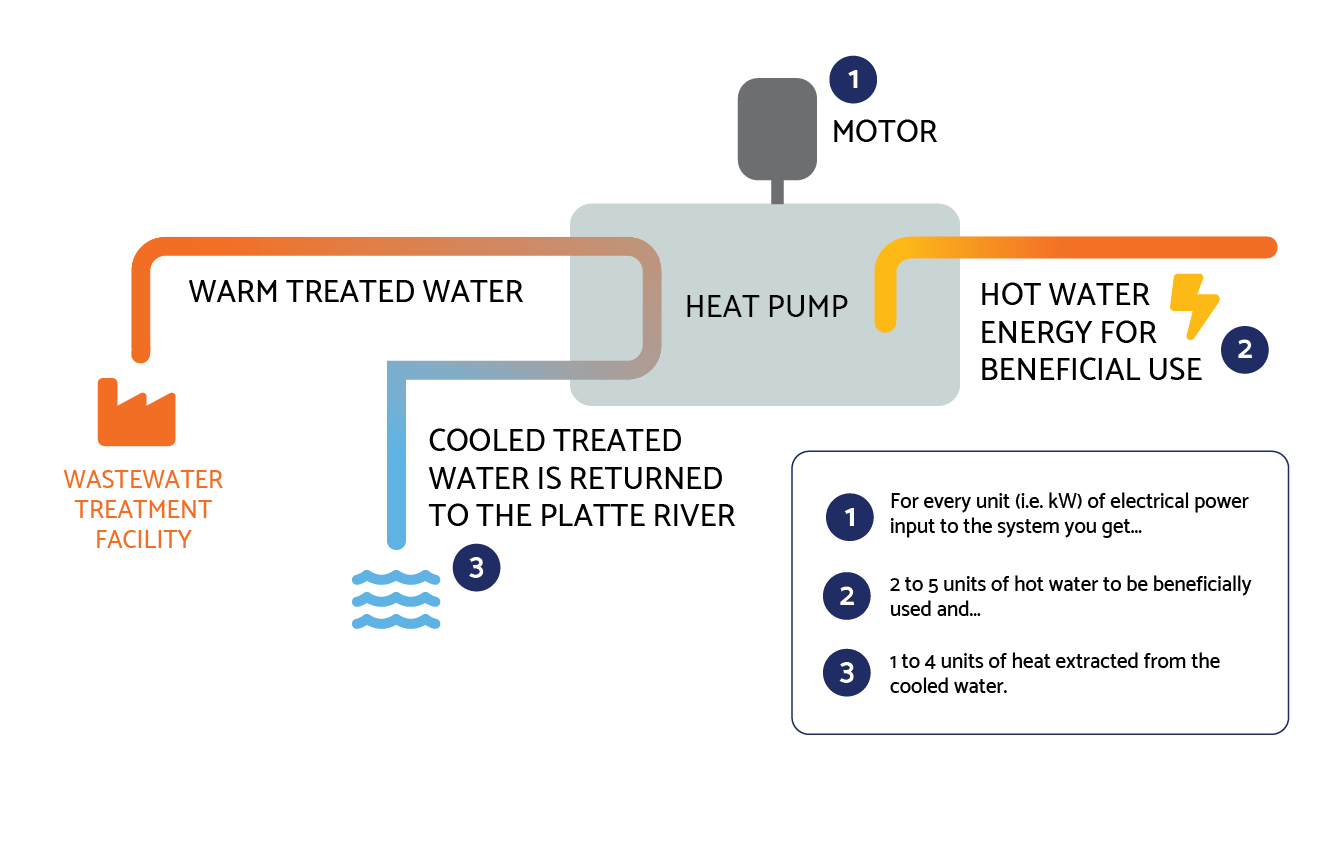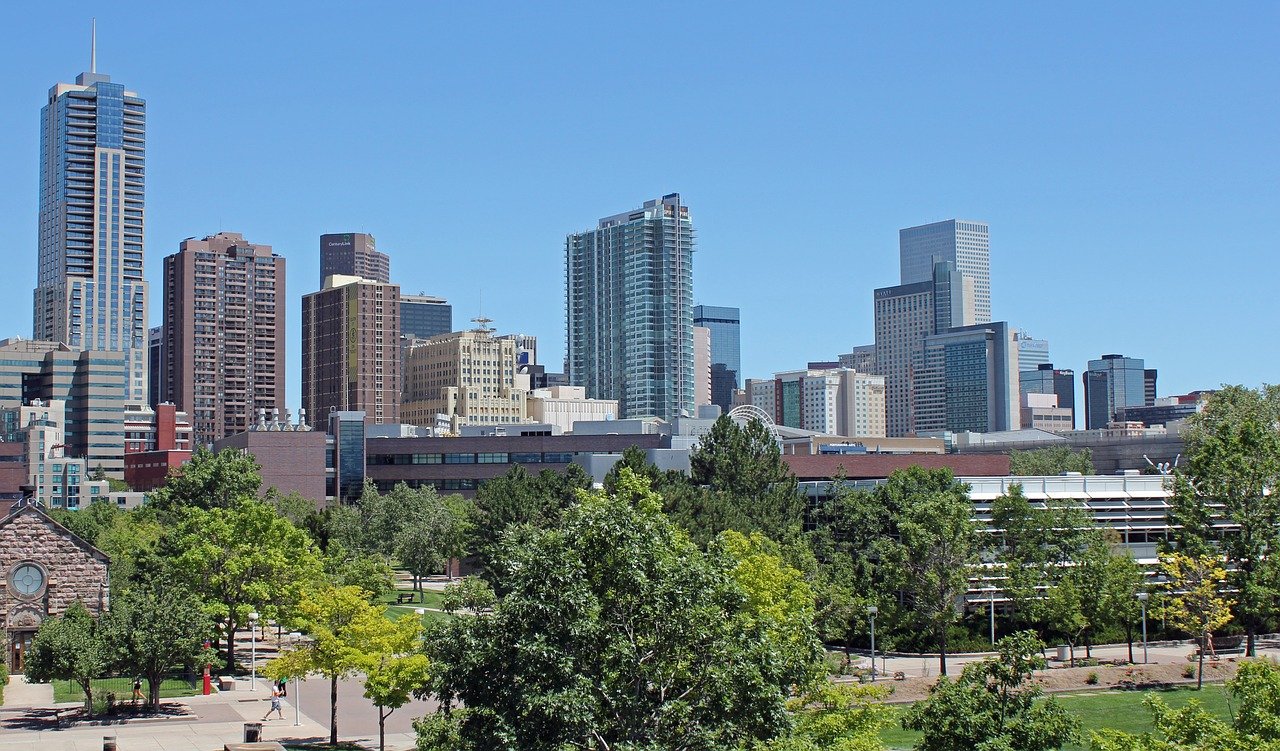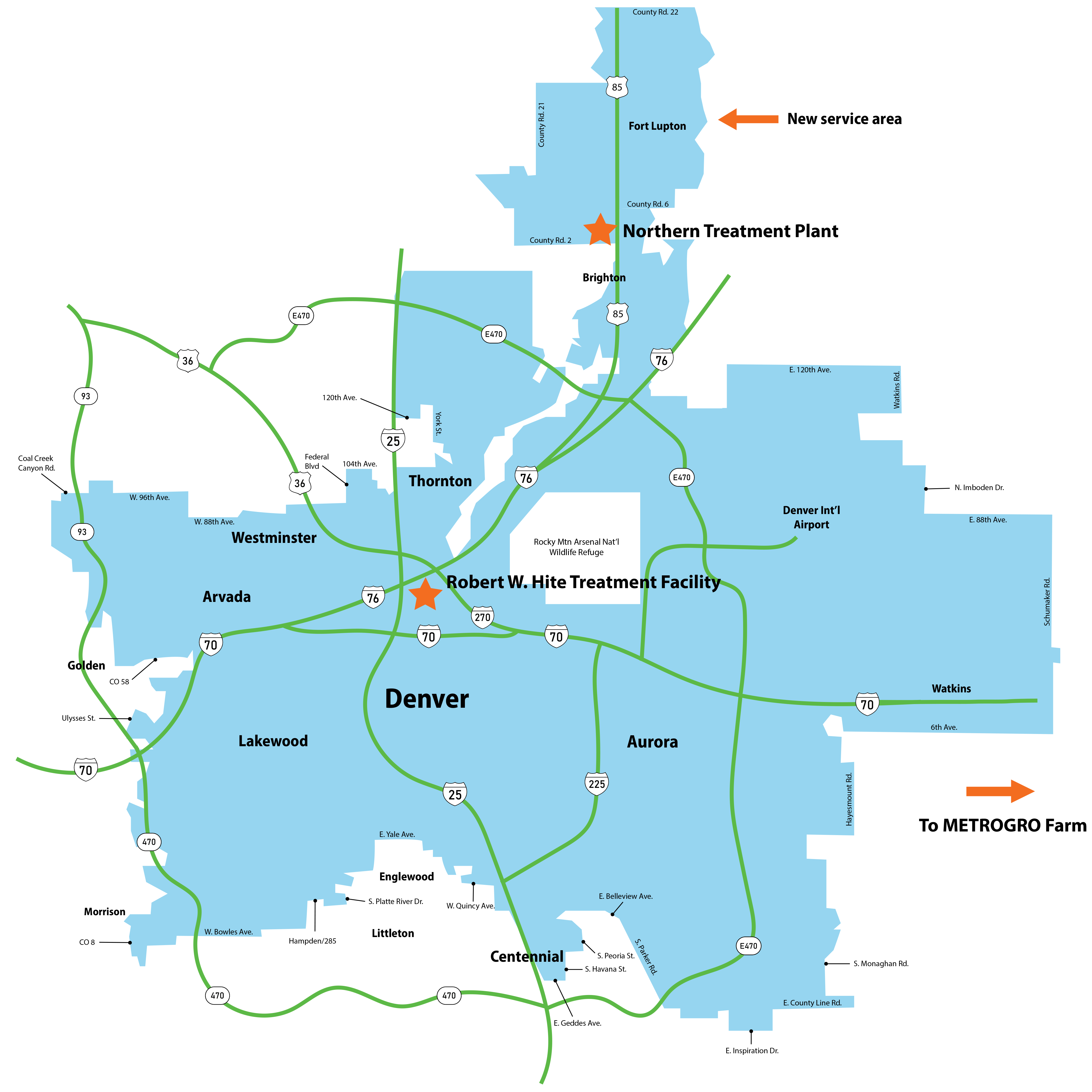Did you know that a sustainable energy source is flowing right under your feet? Learn more about how you can tap into the clean thermal energy of wastewater to power homes and businesses.
Wastewater is Warm
The 2.2 million people throughout our service area use water every day. All that used water that goes down the drains of showers, sinks, tubs, dishwashers, and washing machines is warm. That warm wastewater enters a network of transmission pipelines as it travels toward Metro’s treatment facilities. Unless it’s captured and turned into energy, the warmth of that wastewater is wasted.
The US Department of Energy estimates that 350 billion kilowatt-hours of heat energy are flushed down the drains in the United States every year, which is enough energy to power 30 million homes. However, communities in Colorado and around the world are transforming their communities with this proven and clean energy source.
Proven and Clean Energy Source
Globally there are hundreds of installations in operation that use wastewater for thermal energy recovery. These systems have been installed at both the building energy scale (10 kilowatts) and the campus energy scale (20 megawatts) in cities like Vancouver, Canada and Oslo, Norway.
In a partnership with the National Western Center redevelopment, Metro is providing the thermal energy needed to power the entire Denver campus. Learn more about the Central Utility Plant at the National Western Center here.
Utilities around the country are joining Metro in providing access to the thermal energy of wastewater. Learn more about King County’s Sewer Heat Recovery Program here.
Tapping into Thermal Energy
Colorado aims to be a leader in clean, renewable energy. According to the Colorado Energy Office, Colorado’s renewable net energy generation has more than tripled since 2010. Recovering the thermal energy of wastewater diversifies Colorado’s renewable energy options while also boosting the state’s clean energy economy.
As the largest wastewater service provider in the state, Metro Water Recovery (Metro) is leading the charge to provide access to the clean thermal energy of wastewater within our 805 square mile service area in metro Denver.
How it Works
The heat available in wastewater pipelines is a proven thermal energy source.
The thermal energy in these pipelines offers an odorless, low carbon option for indoor heating, similar to other geothermal exchange systems
This innovative technology uses reliable, well-established heat transfer technology to extract the heat and distribute it to nearby homes and businesses

The Process

Warm, treated wastewater enters a heat pump. The heat pump then works to turn the hot water into a beneficial energy source. Finally, cooler treated wastewater can be released to the South Platte River.

A sustainable model for high-density development
Are you ready to transform your community through thermal energy recovery?
Submit an inquiry using this form or contact Kelley Merritt, Public Information Officer, for information on a free consultation at KMerritt@MetroWaterRecovery.com or 303-286-3455

